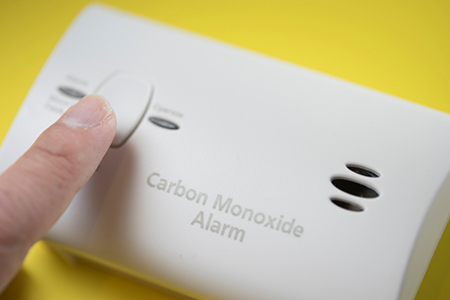Angela Yglesias
Levesque RealtyCell: 805-490-4944
Phone: 805-490-4944
Housing TrendsFebruary 2018 |
Use our tools
to find out
Neighborhood reports
Get a detailed report showing market trends in your neighborhood, including recent listings, sales prices and average time on market.
Get a reportFind a Mover
Find a Mover
Mortgage rates
Powered by thefinancials.com
Mortgage calculator
Get a detailed report showing market trends in your neighborhood, including recent listings, sales prices and average time on market.
Get a reportRent vs buy
How big is an acre? What is an option?
Do I need hazard insurance?
Take a look at our real estate glossary to learn definitions of common words and phrases used in the industry.
National market update
Existing-Home Sales Fade in December; 2017 Sales Up 1.1 Percent
WASHINGTON (January 24, 2018) — Existing-home sales subsided in most of the country in December, but 2017 as a whole edged up 1.1 percent and ended up being the best year for sales in 11 years, according to the National Association of Realtors®.
Read more
Read more
Tired of Big-City Squeeze? Score a Bargain in America's 10 Cheapest Housing Markets
We live in a nation of sharply etched haves and have nots—and nowhere does that dividing line cut deeper than in the world of housing. Here at realtor.com®, we spend a lot of time chronicling the "haves," those soaring, seductive, sought-after metros where inexorable rises in home prices are rivaled only by unstoppable increases in wages, jobs, bleeding-edge trendiness, and four-star fusion chefs.
Read more
Read more
National housing indicators
Existing home sales (Dec)
5.57 millions units*
Existing home median price (Dec)
$246,800
Housing Starts (Dec)
1.192 millions units*
New home sales (Nov)
0.733 millions units*
*Seasonally adjusted annual rate. Source: NATIONAL ASSOCIATION OF REALTORS®.
National economic indicators
Home ownership
4th Quarter 2017
64.2%
3rd Quarter 2017
63.9%
The homeownership rate of 64.2 percent was not statistically different from the rates in the fourth quarter 2016 (63.7 percent) or the third quarter 2017 (63.9 percent).
New home sales
October 2017
-9.3%
November 2017
+17.5%
Sales of new single-family houses in December 2017 were at a seasonally adjusted annual rate of 625,000, according to estimates released jointly today by the U.S. Census Bureau and the Department of Housing and Urban Development. This is 9.3 percent (±11.0 percent)* below the revised November rate of 689,000, but is 14.1 percent (±13.0 percent) above the December 2016 estimate of 548,000. An estimated 608,000 new homes were sold in 2017. This is 8.3 percent (±4.1 percent) above the 2016 figure of 561,000.
Source: U.S. CENSUS BUREAU
How much is your home worth? Get a real-time report on the value of your home. Start now
Regional market updates
View market statistics for your region.
Click on the links below to view data from two different industry sources. Choose information on local prices & state sales from any of 178 metropolitan housing markets prepared by the National Association of REALTORS® or information on sales & price activity from local area markets in 25 states prepared by Clarus MarketMetrics.
Local Prices & State Sales
Disclaimer: The views, opinions, statements and/or ideas expressed in this Message Section do not reflect the ideas, policy, position, views or opinion of Move,Inc.
Consumer tips & hot properties
Tired of Big-City Squeeze? Score a Bargain in America's 10 Cheapest Housing Markets
These metro markets have the least expensive home prices—and that's not all that brings people to town.
Read more
Read more
The 3 Best Reasons to Buy a Home in 2018 (but You'd Better Hurry)
Yes, home prices have been sky-high and choices limited. But market conditions are changing, and this could be your year to buy—as long as you do it soon.
Read more
Read more
5 Reasons It'll Pay to Sell Your Home Early in 2018
If you want to unload your home fast and for maximum bucks, your window of opportunity may be narrowing. Here's why.
Read more
Read more
4 Rock-Solid Reasons to Remodel Your Home in 2018
The longer you wait, the more expensive it will be to renovate or remodel your home. So if you’ve been on the fence, this may be the year to get decisive. Here’s why.
Read more
Read more
These Will Be the Year's Most Coveted Design Trends
Our stable of tastemakers has given us the ultimate scoop on the hottest interior design and decor trends for 2018. And trust us: It’ll be a gorgeous year.
Read more
Read more
Existing Home Statistics
View statistics based on national data, regional data and data gathered from 159 cities & metropolitan areas.
National Statistics
Statistics by City or Metropolitan Area
Regional Statistics
Source: NATIONAL ASSOCIATION OF REALTORS®.
Housing Trends eNewsletter is filled with U.S. Census Bureau key market indicators, consumer videos, blogs, a real estate glossary, mortgage rates and calculators, consumer articles, real estate radio, realtor.com® local community reports and local and national real estate sales and price activity provided by local MLSs and the National Association of REALTORS®.
Subscribe to the free Housing Trends eNewsletter to receive it each month. You can unsubscribe at any time.
Information contained in this eNewsletter is compiled from a variety of sources. The accuracy and authenticity has not been verified by Move, Inc., is subject to change, is provided "as is" and is not guaranteed. The views expressed herein do not necessarily reflect those of Move, Inc. Move, Inc. makes no representations or warranties of any nature with regard to the privacy and/or business practices of the websites linked from or to this eNewsletter nor the accuracy and authenticity of any information contained in such websites, and is not responsible for any content contained in any linked site or for any action or lack of action by any linked site whatsoever, including their use of any information they may collect.


